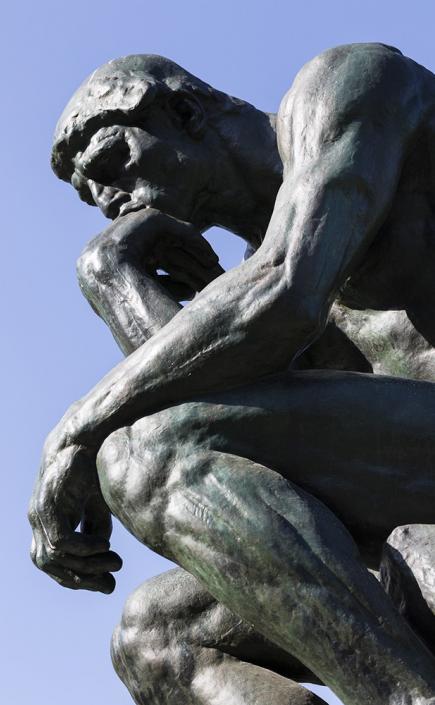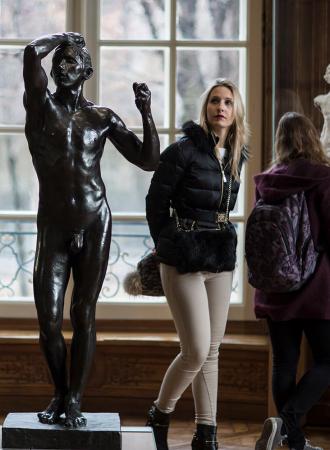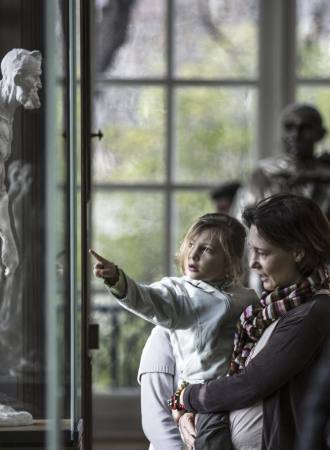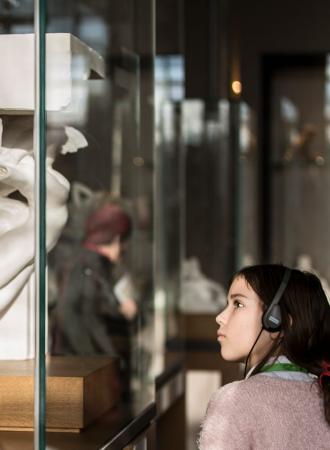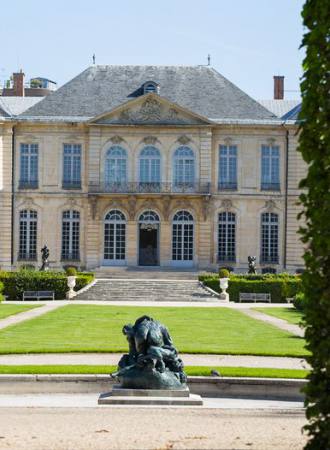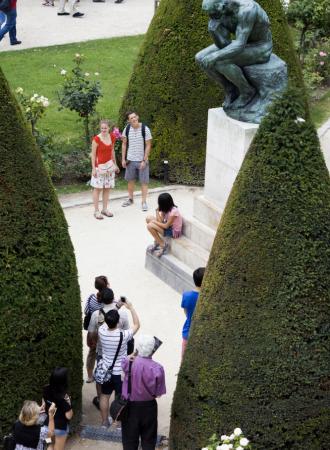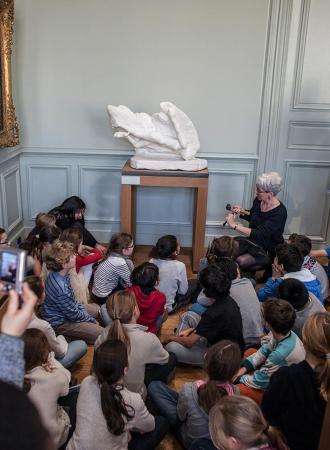Search the site
The Thinker
Auguste Rodin (1840 -1917)
Cast made by Fonderie Alexis Rudier in 1904. Transfered to the musée Rodin in 1922.
Whenconceived in 1880 in its original size (approx. 70 cm) as the crowning element of The Gates of Hell, seated on the tympanum, The Thinker was entitled The Poet. He represented Dante, author of the Divine Comedy which had inspired The Gates, leaning forward to observe the circles of Hell, while meditating on his work. The Thinker was therefore initially both a being with a tortured body, almost a damned soul, and a free-thinking man, determined to transcend his suffering through poetry. The pose of this figure owes much to Carpeaux’s Ugolino (1861) and to the seated portrait of Lorenzo de’ Medici carved by Michelangelo (1526-31).
While remaining in place on the monumental Gates of Hell, The Thinker was exhibited individually in 1888 and thus became an independent work. Enlarged in 1904, its colossal version proved even more popular: this image of a man lost in thought, but whose powerful body suggests a great capacity for action, has become one of the most celebrated sculptures ever known. Numerous casts exist worldwide, including the one now in the gardens of the Musée Rodin, a gift to the City of Paris installed outside the Panthéon in 1906, and another in the gardens of Rodin’s house in Meudon, on the tomb of the sculptor and his wife.
LOCATE THE THINKER IN THE MUSEUM
Sculpture garden
We cannot guarantee the presence of all our artworks; some may be out on loan.
SEE ALSO
Discover the themes related to the work
Date of conception :
1903
Dimensions :
H. 189 cm ; W. 98 cm ; D. 140 cm
Materials :
Bronze
Inventory number :
S.01295
Credits :
© Photographic Agency of musée Rodin - Jérome Manoukian
Additional information
Iconography
- The Thinker(zip, 1567.8 ko)

